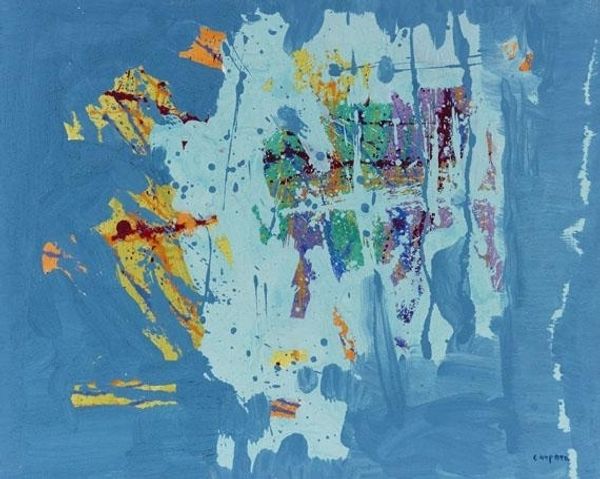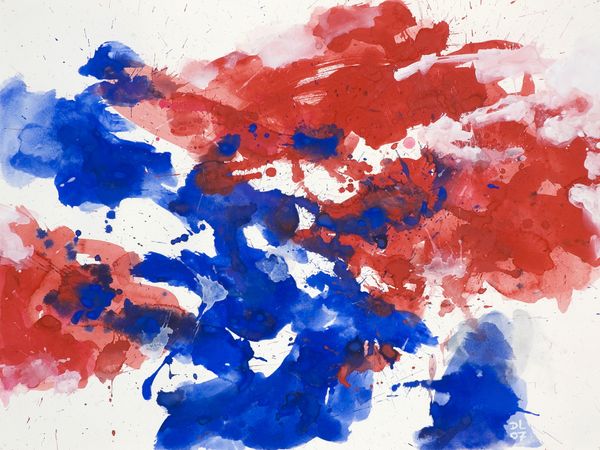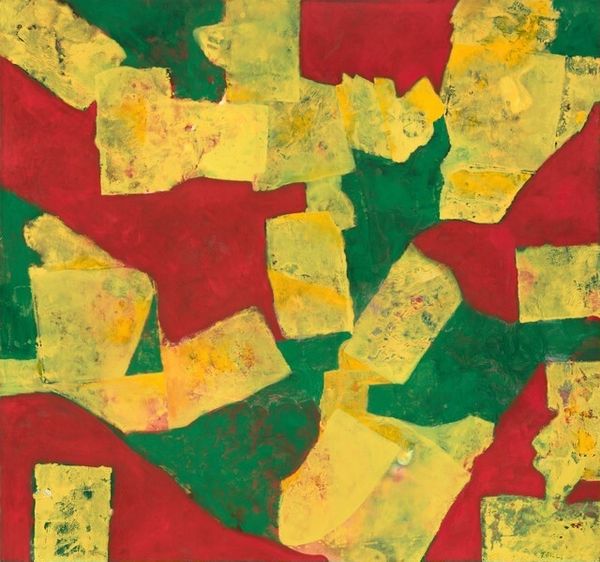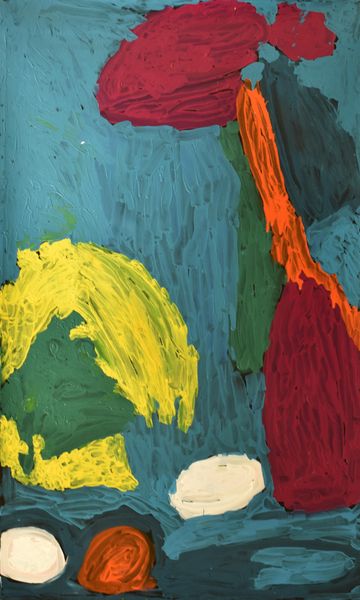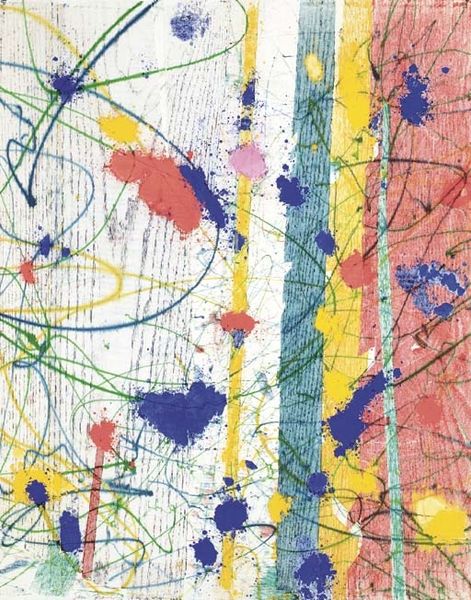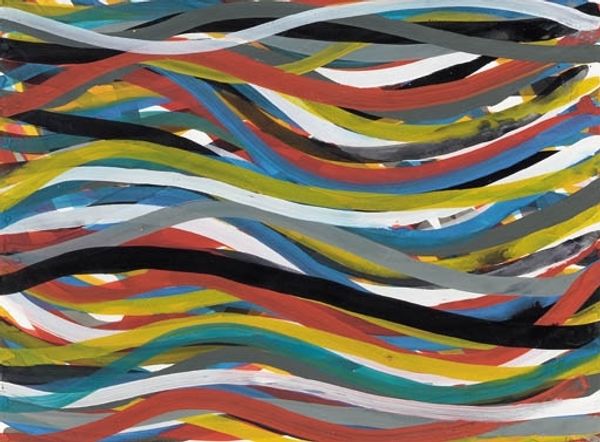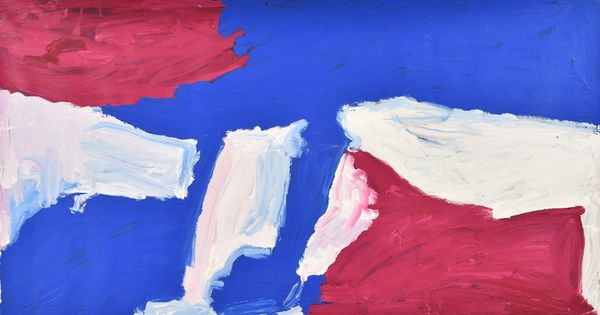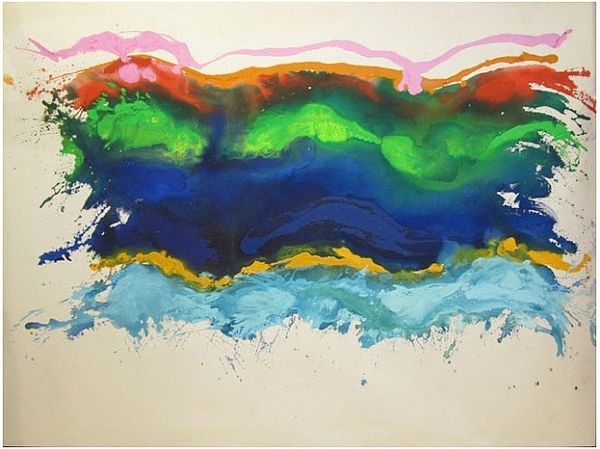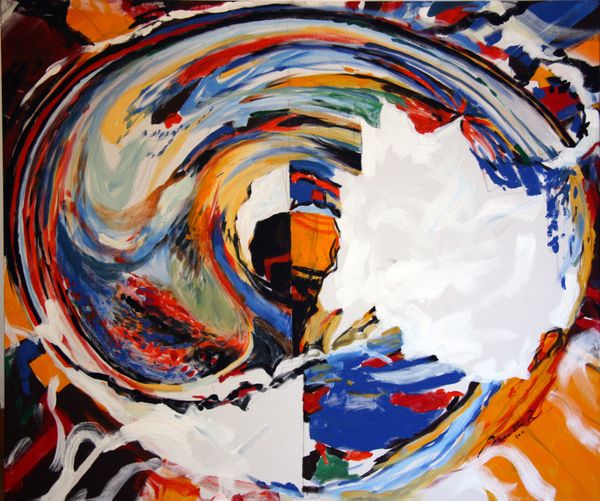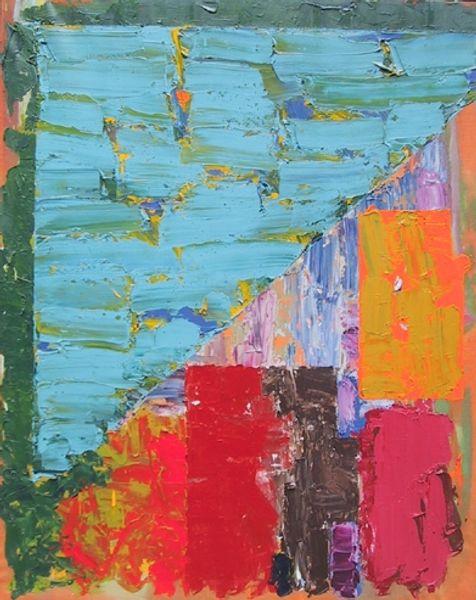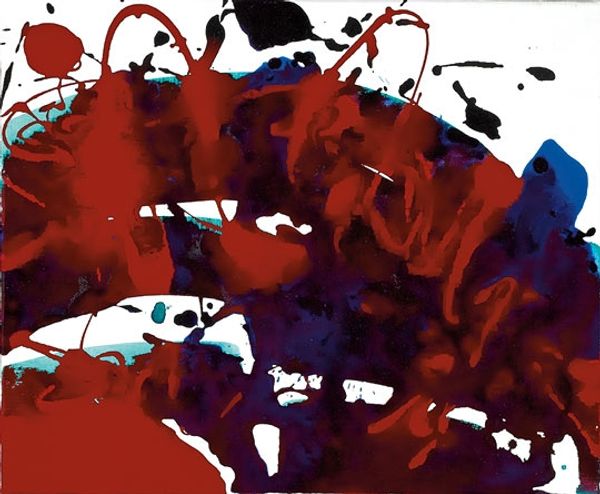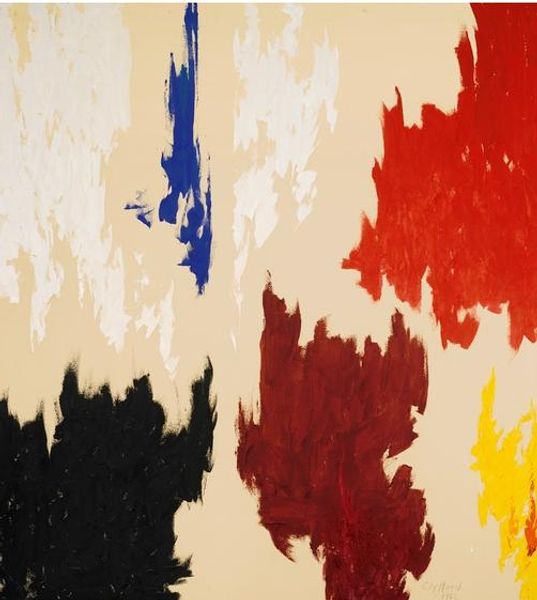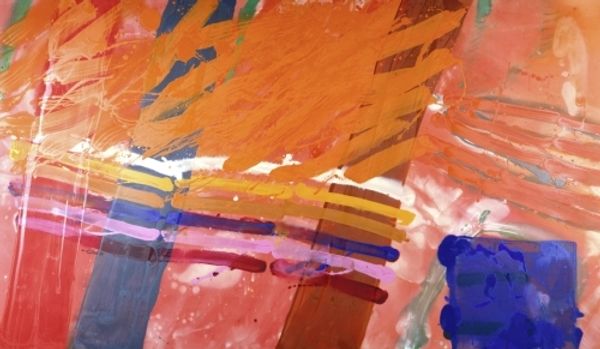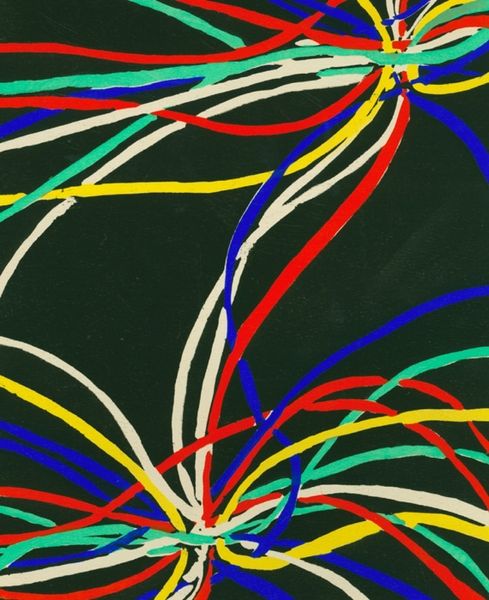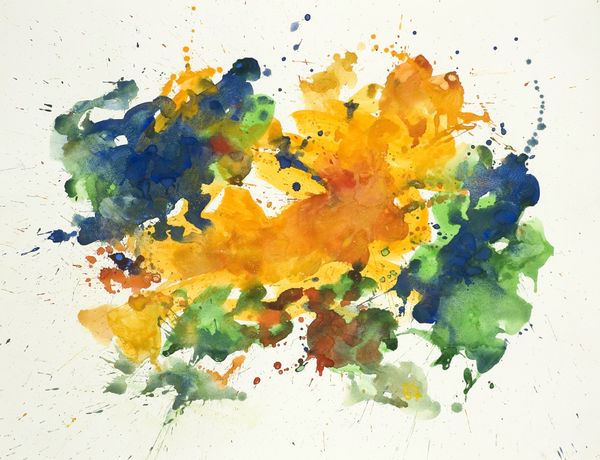
Dimensions: overall: 127 × 203.2 cm (50 × 80 in.)
Copyright: National Gallery of Art: CC0 1.0
Editor: We are looking at "Adios Map," a mixed-media piece made in 2021 by Jaune Quick-to-See Smith. The work feels chaotic, almost like a deconstruction of the American landscape with its bright, jarring colors and scattered farewells. What stands out to you, considering its composition? Curator: The immediate observation is the flattening of space. Quick-to-See Smith utilizes a distorted map as a grounding structure, yet undermines this foundation with an active application of color and text, destabilizing our understanding of form and ground. Consider the use of acrylic paint – its fluidity challenges the rigid borders we expect to see on a map, dissolving distinctions, wouldn't you say? Editor: That makes sense. It feels like she’s pushing against the structure of the map itself. Curator: Precisely! Notice too, how she contrasts the flatness of the representational plane of the United States with almost sculptural impasto strokes and dribbles of paint. This disrupts any unified reading, forcing a consideration of the artwork’s materiality. How does this emphasis affect your viewing experience? Editor: It makes me feel a little uneasy, almost like the map is falling apart. It draws my attention to the physical process of painting. Curator: And rightly so. It highlights the artificiality of the image. Do you agree the chromatic density pulls our focus, overriding our search for familiar geographies? What conclusions do you draw about the relation between surface and the depth suggested by the form? Editor: Absolutely. It's like the map is a mask, barely concealing a deeper, perhaps messier, reality beneath. Curator: An astute observation. We are left with a fragmented topography of both surface and symbolism. The "goodbyes" scrawled over the landscape, too, serve to highlight absence as much as presence. Editor: Seeing how she manipulates the form makes me rethink my initial reading; it is more than just a chaotic expression of farewell. It is more like a dissection of America itself. Curator: Exactly! And through such strategies, she demands that the viewer be involved in constructing meaning, rather than passively accepting it.
Comments
No comments
Be the first to comment and join the conversation on the ultimate creative platform.
